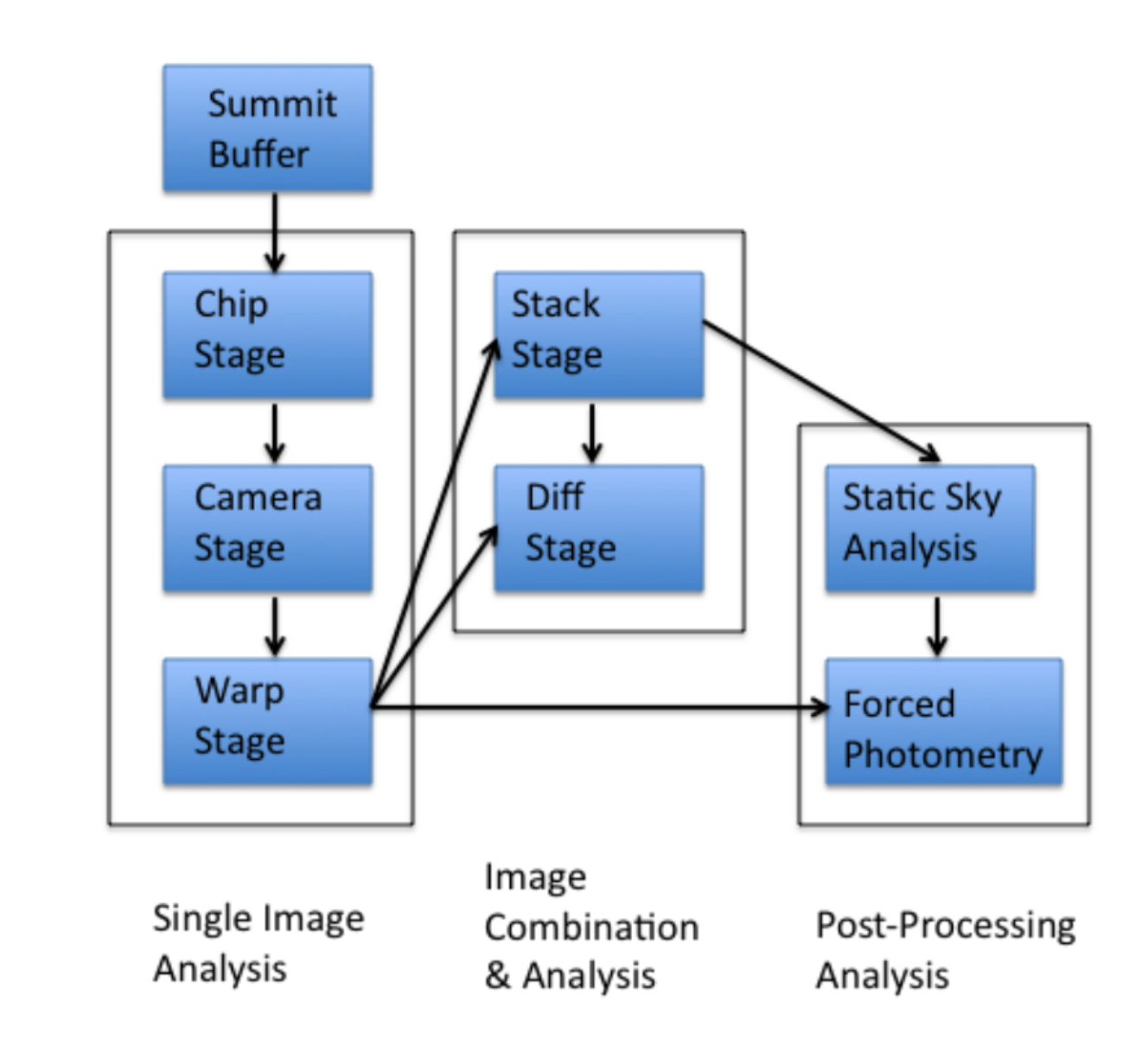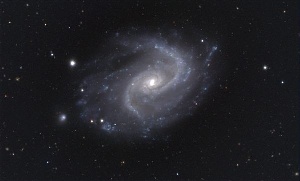PS1 took approximately 370,000 exposures from 2010 to 2015, each exposure consisting of 60 CCD images. These exposures are detrended, astrometrically calibrated, resampled (warped) onto a standard sky coordinate grid, stacked, and differenced. The different types of images are described below. More details about image filenames and data formats are included in the description of the PS1 Image Cutout Service.
The following information is taken from Waters et al. and Magnier et al., which should be cited appropriately.
On this page
 |
| Schematic of the images and analysis processing stage of the PS1 IPP Pipeline, described in Magnier et al. |
|---|
Raw images
After an exposure is taken at the telescope, the raw image files of the 60 CCDs (see PS1 GPC1 camera) are corrected for persistence issues and then handed over to the PS1 IPP pipeline for further analysis. The STScI PS1 Archive does not provide these images.
Camera images
The camera images are created by applying PS1 Exposure detrending to the raw images (i.e., masking, bias subtraction, flat fielding), and determining the astrometric and photometric calibration. The STScI PS1 Archive does not provide these images.
Image artifacts and anomalies
The OTA CCDs have known artifacts and anomalies. A lot of work has gone into characterizing these artifacts, and removing them if possible. Pixels affected by these artifacts or anomalies are tracked in the mask images with pixel flags. For more info see the PS1 Image artifacts and anomalies page.
Warp images (available in DR2)
Warps are the result of resampling and realigning the camera images into a skycell of the PS1 Sky tessellation patterns, a set of common pixel-grid images with simple projections from the sky. Warps are astrometrically and photometrically calibrated. These images are part of DR2 and can be accessed and downloaded through the PS1 archive image cutout interface. For more info see the PS1 Warp images page.
Stack images (DR1)
The PS1 stack images, described in detail in Waters et al., are the 'optimal' combination of multiple warps on the same skycell. For the 3pi survey there are in general 12 warps per filter, but for the Medium Deeps it can be several hundred. Stacks are also astrometrically and photometrically calibrated. These images are part of DR1 and can be accessed and downloaded through the PS1 archive image cutout interface. For more info see the PS1 Stack images page.
Difference images (planned to be available in future)
Difference images are created by subtracting a warp from another image, in general the stack, after matching the PSFs and normalization using a spatially varying kernel. All static objects such as galaxies and constant stars are subtracted out, and only the excess flux from the different epochs is left. Even though the differences images are not stored on disk, they can be created, and it is planned to make them accessible through the STScI PS1 interface in a later release.
Mask Image
All images, warps and stacks, have Pixel Flags set for each individual pixels. This information is saved in a mask image, which in general has the suffix .mask.fits(.fz) and mk.fits(.fz) for warp and stack images, respectively. For more info see the PS1 Mask image page.
Weight Image
Weight images are variance maps. For single epoch PS1 Warp images, these variance contains the readnoise, Poisson noise, and other noise sources. For PS1 Stack images, the noise is propagated from the individual input warps. These weight images can be used for estimates of the uncertainties in the photometry. We note that the deprojection of the chip images into the warps correlates the pixels, introducing covariance. Therefore the derived uncertainties might underestimate the true noise. For more info see the PS1 Weight image page.

PS1 3-color image of NGC 894

4 Comments
Annalisa Calamida
Jul 28, 2015What is an OTA?!
Armin Rest
Jul 28, 2015OT=Orthogonal Transfer. OTAs are the Orthogonal Transfer CCDs.
David Soderblom
Dec 11, 2016There's jargon here that is unexplained.
Is the galaxy image at top from PS1?
Armin Rest
Dec 11, 2016Yes, images is from PS1